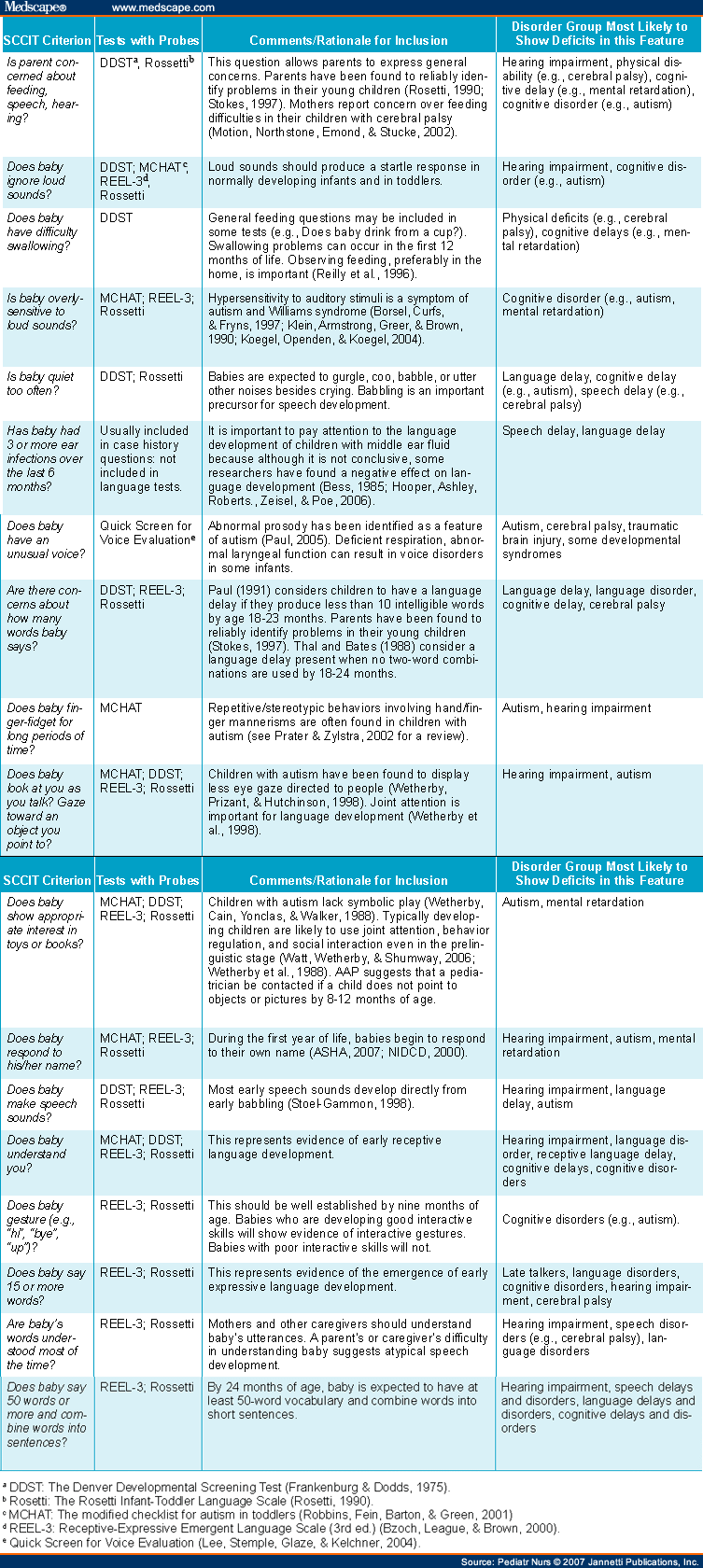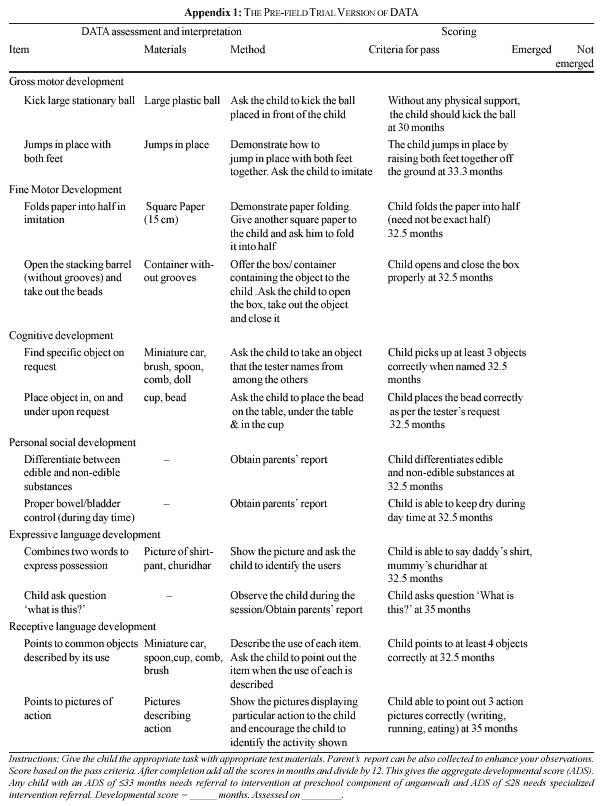

8 Table 1 lists the limitations and strengths of available developmental delay screening tools to assist family physicians in choosing the best one for their patient population. 12 There are no randomized studies of contemporary tools that compare children who have been screened with those who have not.

6 Although its purpose is to differentiate those who might have a delay from those who most likely do not, the selected tool should be a quality instrument that is as accurate as possible to minimize underdetection and overreferrals. 6 The function of a screening tool is to identify areas in which children's development differs from established norms for age. 20 No universally accepted screening tool is recommended as appropriate for all populations and ages. 12 Criterion standard is defined as an ideal test that covers all areas of development, is equally applicable to all ages, has construct validity, and has a sensitivity and specificity close to 100 percent. The literature does not identify a criterion standard in developmental assessment, other than the lengthier screening test performed after a referral has been made. 6 This policy is intended to disseminate clinical preventive service recommendations based on empirical and clinical evidence revealing either clear benefits or harm. 5 The American Academy of Pediatrics recommends surveillance at all well-child visits, combined with standardized screening for developmental delay at nine, 18, and 30 (or 24) months of age, as well as at every well-child visit when developmental delay is suspected. The American Academy of Family Physicians agrees with the USPSTF's rigorous assessment of empirical evidence.

3, 4 The recommendation is not a statement for or against the effectiveness of formal screening, but a conclusion of the current state of strong evidence to support specific clinical preventive services. Preventive Services Task Force (USPSTF) reports that there is insufficient or inconsistent evidence to recommend for or against routine use of brief, formal screening instruments in primary care to detect speech and language delay in children up to five years of age. Additional evaluations and referrals are recommended if developmental delay is identified or suspected. Family physicians should be familiar with currently available screening tools, as well as their limitations and strengths. The most extensively evaluated parent-completed tools are the Parents' Evaluation of Developmental Status and the Ages and Stages Questionnaire. The literature also supports screening for developmental delay with parent-completed tools rather than directly administered tools. Recent studies support the use of a validated screening tool at regular, repeated intervals, in addition to physician surveillance, at all well-child visits. Implementing office-based systems for screening and referrals may overcome these barriers and improve outcomes. In addition, multiple barriers exist, which often prevent physicians from performing initial screening and completing additional evaluation and referrals. Empirical literature on clinical recommendations for developmental delay screening in primary care is inconsistent and often insufficient to direct the family physician. If developmental delays are detected too late, opportunities for early intervention may be lost. Can developmental screening tests identify children who are developmental at risk? Pediatrics, 83, 578–585.According to the literature, 12 to 16 percent of children in the United States have at least one developmental delay, yet as many as one-half of affected children will not be identified by the time they enter kindergarten. Identification and evaluation of children with autism spectrum disorders. Accuracy of the Denver II in developmental screening. The Denver II: A major revision and restandardization of the Denver developmental screening test. K., Dodds, J., Archer, P., Shapiro, H., & Bresnick, B. Journal of Pediatrics, 71, 181–191.įrankenburg, W. Identifying infants and young children with developmental disorders in the medical home: An algorithm for developmental surveillance and screening.


 0 kommentar(er)
0 kommentar(er)
